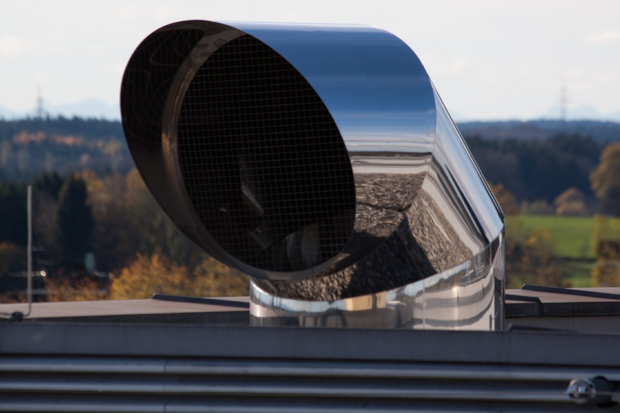Have you noticed your HVAC lacking efficient airflow? If so, then you need to get this checked immediately because the more effort your unit makes in cooling your entire house (especially if it’s a big one), the larger your energy bill will be by the end of the month.
So before that happens, we’ve prepared this article to teach you how to improve airflow in vents by highlighting some of the common problems your HVAC system encounters.

Common HVAC Airflow Problems and How to Fix Them
1.The Air Filter
The air filter acts as the guardian to one’s HVAC system. It’s responsible for catching and trapping dirt, dust, pollens, and any other airborne particles before they infiltrate your HVAC system. When properly maintained, your HVAC system will be able to keep the indoor air much cleaner and protect the equipment from getting clogged up with debris and dirt.
If the air filter is indeed dirty or clogged up, or if the filter is too narrow or has been inappropriately fit, you’ll very likely notice a weaker airflow coming from the vents in your house. A clogged filter indicates that your HVAC system needs to work harder to give you the same amount of airflow as you would normally get. Not only will this adversely affect energy efficiency, but will also compromise airflow through the vents and through the system. To prevent this issue, regular tune-ups are a must.
2.Blocked or Dirty Ducts.
Even if the air filters aren’t the issue, and the airflow is still not efficient, then the problem must lie with the air ducts. It could be that the air ducts get clogged or dirty, possibly because of small particle deposits that get stuck to the ducts. If this happens, then it could lead to static pressure or moisture.
And if those small particles continue to accumulate, homeowners will encounter airflow and air quality issues. Besides that, tiny critters will start infiltrating and building houses right inside your ductwork, leading to blocked and dirty ducts.
HVAC systems are built to distribute cold and hot air across your house evenly, and if the amount of air that gets through changes, then it will likely cause inconsistent results. But whether it is dirt or dust accumulation over the years, or a mouse’s house, the best solution on how to increase airflow in the air duct is to clean the ducts.
However, when you do consider cleaning the air ducts, you had best leave it to the professionals as they’ll efficiently get rid of all of the dust that’s clogging the system to ensure it gets back to normal. Trying it yourself will be doing your air duct more harm than good.
If you’re looking for an air duct cleaning service in Phoenix, Arizona, then click here.
3.Duct Leakage
Another duct-related issue is duct leakage. Believe it or not, over 90% of North American homes have air duct systems that contain small cracks and holes. Because of their presence, cooling and heating costs are increased, and comfort is ultimately dropped.
According to the Department of Energy, a typical duct system’s leakage is between 35 to 50%. For efficient airflow, the HVAC system has to be sealed completely, with only the exits and entrances being the vents and returns throughout your house. When there are gaps in the connections, the vents have holes in them, or any other kind of league, the cool or warm air will leak out, and air pressure is lost. This makes the air more difficult to move throughout the system, thus resulting in weaker airflow from the vents.
The small openings can be taped on your own, but for the bigger problem areas, you’ll need to get a specialist to patch them up, as well as get new ducts if they’re beyond repair.
4.Ensure AC Dampers are Open
If you’re experiencing weak airflow in either one or two rooms in your entire house, this may not be a problem with the air conditioning, but rather the dampers being off. Consider AC dampers like the valves in your air ducts – when open, the dampers allow air to move around easily. But if they’re closed halfway or all the way, you’ll experience either week or zero airflow from your AC.
So to fix the problem, you need to inspect your dampers by going into the utility room to look for your HVAC plenum (which happens to be a big metal box). When you find the box, you’ll see that several ducts are coming out of it, each with a lever that should be in the ON position – those levers are known as AC dampers. If you find any of these dampers turned off, then turn them back on. After that, you’ll notice how much better your AC airflow will be.
5.Schedule Professional Maintenance of Your HVAC System
When you’ve tried everything on your end on how to increase airflow through vents, without getting any better results, then it’s time to call the professionals. You may think you’re too good for an annual tune-up, especially when your HVAC system is new, but it will make a massive difference in the way your system operates.
But be sure that whoever you have on board to service your HVAC system are people who are well reputed and have been positively praised by their past clients and customers, especially in the last month. You also need to see whether they are still legally operating, see if they have LinkedIn, Facebook, and other social media profiles. And after they’re done with their work, be sure to change the filter every 30 days during heavy use and then replace it every 90 days for the rest of the year.



